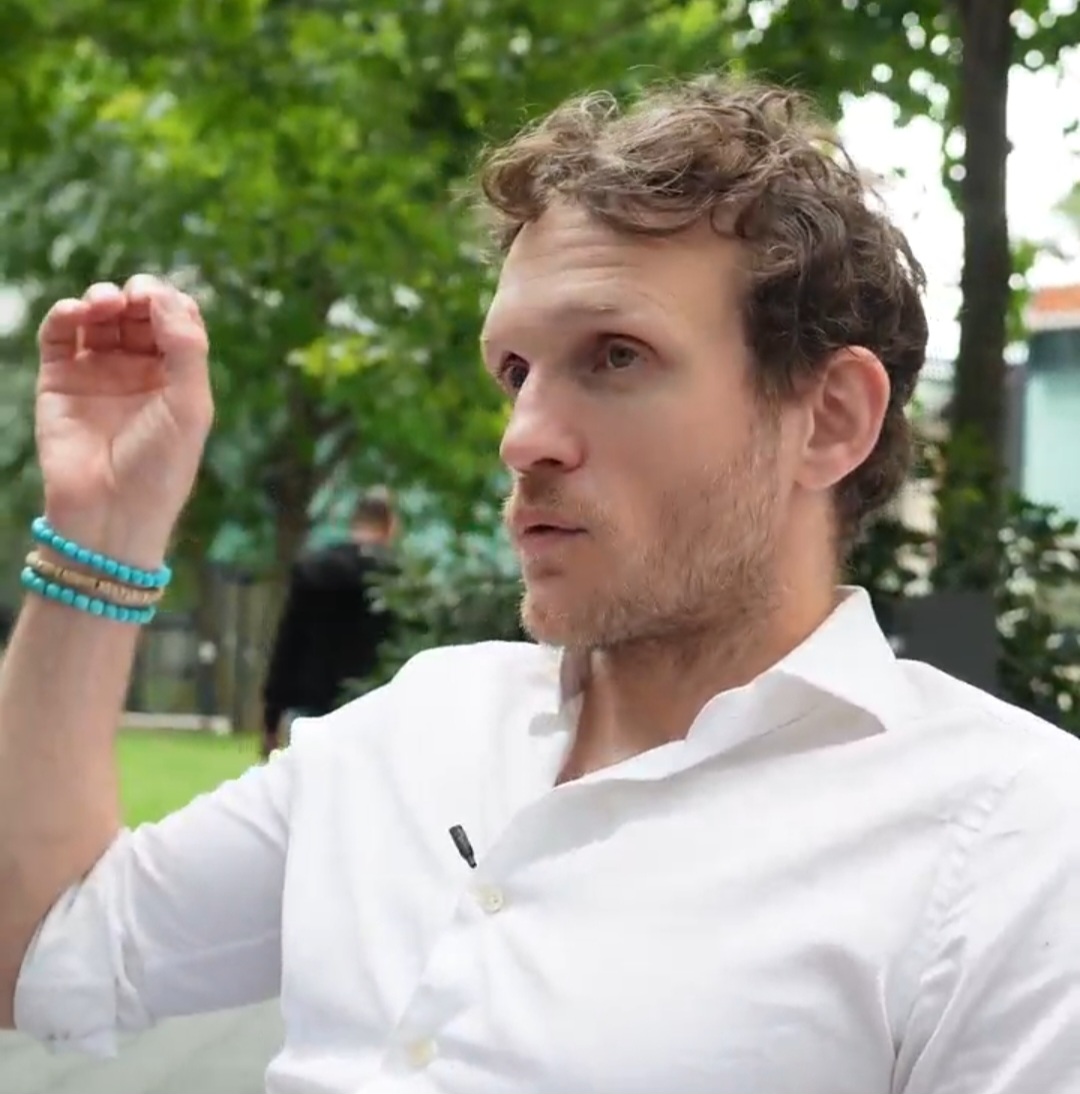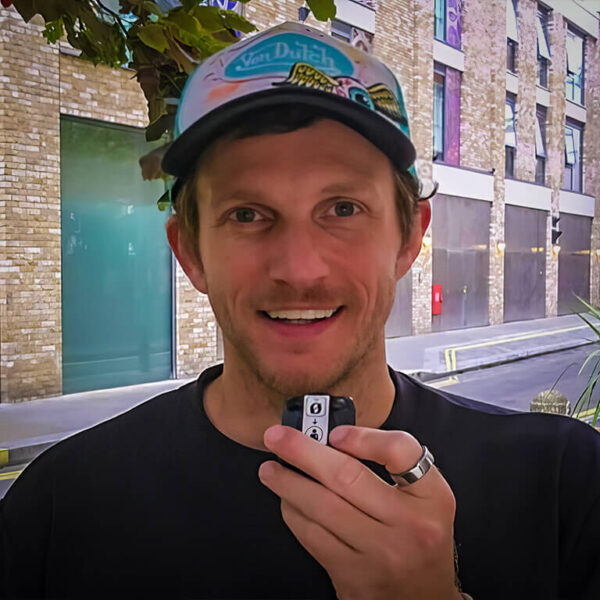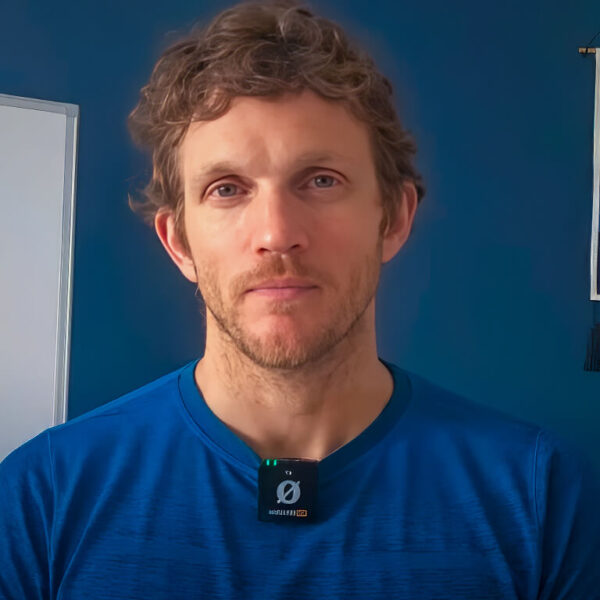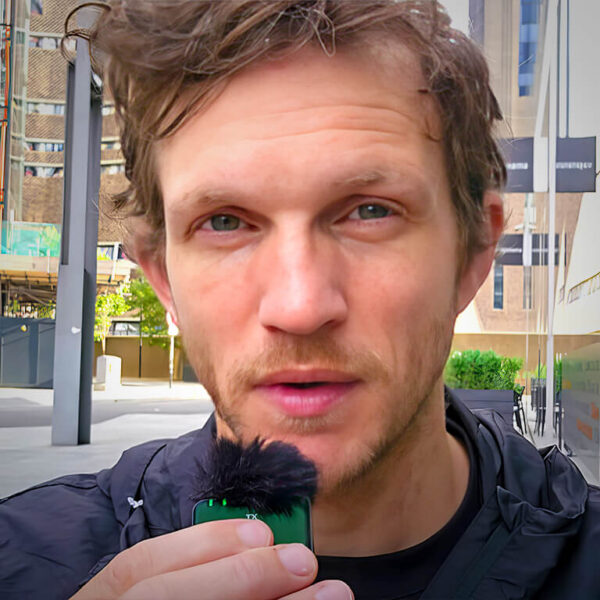
Daygame Blueprint | How to Lead & Create Instant Dates
So, in today’s blog, I’m going to be decoding some daygame for you.
It’s now Monday. On Saturday and Sunday, I was hosting one of my daygame courses in London.
I had three of my coaches alongside me. And what I wanted to do was just talk through what happened yesterday.
If you’d like to know what happened on Saturday, then just check out the vlog that I published yesterday.
What Actually Happened on the Course?
We met my clients in the morning. There were two clients, and we were focusing on two things, right?
-
Staying in conversation longer
-
Going on instant dates
Now, if you’re new to daygame and you haven’t approached women in the real world before, this is a little bit advanced to start off with.
Because generally speaking, most guys struggle with the approach.
Over the past 17 years of running daygame courses, almost everyone I’ve ever coached struggles with the approach.
Even if you think that you can do the approach, there’ll be things that you could improve. Your posture. How close you are standing. Your eye contact. Pausing. There’s just an array of different things that help.
Also, for example, if you’re a big guy, you have to approach women in a different way to if you’re a slight guy.
A big guy can intimidate women quite easily, whereas a slight guy gets lost quite easily. So there is a technical part to doing these things properly.
I do share loads of content on these if you want to see some tutorials and demonstrations. But I wanted to focus specifically on prolonging the conversation.
How to Continue a Conversation
So the principles and techniques I teach — and also decoding how to go on instant dates — because if you’re approaching women and having conversations but not sharing instant dates, you’re kind of missing the point, right?
The instant date is the magic when it comes to the daygame blueprint.
Because if you’re just speaking to women and not doing instant dates, the chances of them messaging you again go down considerably.
Now, I want to add a caveat to that.
If you’re extremely good at meeting women during the day, you can create sexual tension fast and give women your number, and they will text you without doing an instant date.
But that is a super advanced way of doing things. There’s a lot you need to learn before you can do that.
Let’s Focus on the Key Skills
So let’s just focus on the things that most guys need help with, right?
How do you continue a conversation? So you’ve gone over to a woman. You’ve complimented her. It’s going well.
But every time you do this, she begins to walk away. And you can feel it, right?
Her body language shifts and she says, “I’m in a rush,” or “I’m meeting a friend,” or “I’ve got to get back to work.”
Now, whilst these are reasons, they’re not a polarised way of saying, “I don’t want to talk to you anymore.”
What they’re doing is excusing themselves because you’re making it awkward — because you don’t know how to progress to the next phase of the situation.
And when someone feels uncomfortable, they leave. Especially when they don’t know you that well.
So there are a few things that you can do that will help.
When I’m coaching someone, I’m focusing on developing my client’s courage and self-confidence, but I’m also focusing on allowing women to feel secure and safe with the way you approach them. Because both are important.
If you’re going around car-crashing and making loads of mistakes, making women feel uncomfortable — that’s not the way of doing this.
Add Value at Every Stage of Daygame
The way of doing it is to add value at every stage. You add value at the approach. You add value when you continue the conversation.
So, how do you add value to continue a conversation?
One of my clients was asking too many questions. You ask a question, you want something, right? Another client was standing too long in the same spot without progressing things.
So I’m going to teach you a little bit of psychology first.
When you first meet someone, it’s the meeting location, right? Two individuals meet.
Now, if you watch films, you’ll notice that these two people — man and woman — they meet, they move somewhere together, and then they become a couple. Well, the same is true in everyday life.
There’s a story that needs to progress.
The Power of Movement in the Daygame Blueprint
So when you’re speaking to someone during the day and you’ve just met them, a simple thing like saying, “Look, we’re in the way. Let’s move over here,” and you move — and you lean up against something — maybe a shop window or a door — that does a few things:
-
It enables you to relax your body language
-
It allows a woman to be locked into the conversation
-
It progresses things so you’re no longer two individuals, but now a couple speaking
If you just do that, without any of the conversation stuff, your interactions will improve — because you’re understanding the psychology behind your actions in dating.
We were working on this yesterday and it makes such a huge difference. Your conversations can go from being 30 seconds to 20 minutes just from that one shift.
So it’s almost like a precursor to sharing an instant date together. You’ve got to get that bit right. It’s just moving slightly. Very, very powerful.
How to Talk About a Wider Range of Topics
Once you can do that and you are in conversation a bit longer, how do you then speak or converse over a wider array of topics?
Now there are hundreds of ways of doing this. And when I work with my clients, I pick the one that they need. But it’s true that there are general themes that keep coming up. So I’m going to share a few that will probably help you and allow you to express yourself better and to connect better.
Because that’s the really interesting point here. It’s not just about continuing a conversation. It’s about you expressing a part of your personality more. And that’s what’s really important.
Storytelling Techniques That Work in the Daygame Blueprint
So, there are a few different ways of doing this. Number one is to tell stories. Now storytelling is a big topic, but here are a few of my favourite ways of doing it:
-
Childhood stories
-
Word association stories
-
Motivation stories
Let’s start with childhood stories. If I’m speaking to a woman and she says the word coffee, I can share a childhood story about coffee. If she talks about books, I can talk about the very first book I read growing up.
When you talk about childhood experiences, a few things happen:
-
You show your depth of character
-
You allow someone to understand more about you
-
You give her more threads to continue the conversation
If you just say, “Oh, I like reading,” that is quite hard to respond to. But if you say, “The first time I read a book was incredible because I didn’t understand you could learn so much through the written word,” then that gives the other person more to grab hold of.
They get a sense of your character. It makes it easier for her to ask questions or to keep the conversation going.
Where the Childhood Story Technique Came From
Now, as far as I know, I invented this about ten years ago. Sharing childhood stories in this specific way. I don’t know anywhere else in the world that teaches this the way that we do.
Here’s how it started. I had a client on one of my courses and what I was teaching him wasn’t working. I was struggling. So after day one of the course, I had to go away and sleep on it.
That night, I happened to be watching a film. And it cut to the main character as a kid. And I thought — let’s just try childhood stories.
So we tried them the next day — and it was like magic. We’d opened up a whole new kind of communication skill I didn’t know existed. Since then, it’s been a really big part of what we teach.
And it’s authentic. When I drill my clients to do this, I get a model on the course to say any random word. The client then has to tell their earliest childhood memory associated with that word.
Let’s say the word is phone. You have to speak on it: “My earliest childhood memory of a phone was a Blackberry. I remember playing with my mum’s Blackberry. Then I got my own, and I remember how hard it was to use that tiny keyboard.”
It works because you are emotionally connected to what you are saying. That’s what makes these stories powerful.
If you rehearse these too much, they lose that emotional charge. So I always say – do not repeat the same story twice to women. Explore new avenues. Talk about different things. That is what makes you interesting and genuine.
The Six-Thread Word Association Exercise
Another one is just word association. Just speaking freely based on whatever word comes up.
If someone says coffee, I could be like, “Oh my god, there’s this new coffee shop near me, and it’s amazing because they ice the coffee in a certain way.
It takes around three minutes, and when it comes out, they do this incredible thing with the milk on top. There’s always a queue around the corner. Everyone loves it.”
So when I’m coaching clients, I teach them to give six threads. One sentence leads to another – just like that. It’s flowing, connected speech.
Now, if you’re telling these stories and women aren’t asking questions or connecting with you, here’s a follow-up technique.
End your story with a question or a statement that invites them in:
-
“Have you got a coffee shop near you that does that?”
-
“Have you ever had coffee like that before?”
This creates engagement. Again, this was a big learning moment from one of my clients. He was great at storytelling, but after his stories, the woman would say, “Okay…” and the energy would die.
So we added that technique. You tell the story, and then follow it up with a question or a relatable comment.
And just to be clear: it’s okay to ask questions – as long as you’ve told a story first. And as long as the question relates directly to the story. That’s a big one in the daygame blueprint.
Motivation Stories and A to B Transformation
Another form of storytelling I love using is motivation stories. These are really powerful. You share a time in your life when you were bad at something, how you overcame the adversity, and how you became stronger.
For example, I was once sitting with a friend having a coffee when a guy he knew came over and started an altercation with him. I got involved, but I did not really know what I was doing. Afterward, I realised I could have been hurt – badly. That moment made me decide to start martial arts. I booked in for a year and a half of one-to-one training, learning how to protect myself and the people around me. And honestly, it was one of the best decisions I’ve ever made in my life.
That is an A to B story. It shows growth. These types of stories are great for showcasing your personality and the journey you have been on. They build rapport, trust, and emotional connection. They’re also a key part of the daygame blueprint when it comes to making your interactions stick.
There are other styles of storytelling too – like rags-to-riches stories – but the principle is always the same: let your personality come through in an authentic way. Not rehearsed. Not mechanical. Just real, emotive, in-the-moment communication.
Demonstrating Empathy with Reflective Listening
Now, once you’ve got your storytelling down, there are a few other things you can do to keep the conversation flowing. One of the most important ones is reflective listening.
Let’s say a woman says, “I really like going to the gym because I feel great afterward.”
You reflect it back:
“You feel amazing when you go to the gym because it energises you.”
That’s called a pure reflection. In behavioural psychology, this is one of the most powerful ways to show someone that you understand them. This is demonstrating empathy – and it works wonders in daygame.
Just nodding is not enough. If you reflect what she says in your own words, she feels seen and understood. That deepens the connection. And again, this is another core component of a well-developed daygame blueprint.
Once you get better at this, you can level it up:
-
Balanced reflections: “On the one hand you like going to the gym because of how it makes you feel. On the other hand, sometimes it’s hard to find the time.”
You can even flip it and use it for teasing:
If she says, “I like going to the gym because it makes me feel great,”
You say, “You like going to the gym because you love hitting on all the guys there, right?”
That’s a misinterpretation — used for flirting and creating playful tension. Same core technique. Different application.
Vibing Over Shared Interests
Another easy way to continue a conversation is by vibing on shared interests.
Let’s say you meet a girl and she says she’s into reading. You connect on that.
“What’s your favourite book?”
“Why did you like it?”
Then you say, “Mine was this…” and now you’re vibing on a shared topic.
This kind of connection helps move the conversation into a more relaxed and enjoyable space. You’re not just talking – you’re relating. You’re not interrogating — you’re engaging. That’s a big difference.
Daygame Blueprint: Stop Chasing, Start Leading
Let’s talk about what most guys get wrong — the number exchange.
You hear stuff like:
“Would you like to come for a coffee?”
“Can I have your number?”
“Do you want to go on a date with me?”
All of these are chasing behaviours. They don’t work well. I’ve tested every possible way of doing this. I’ve coached clients through all of them. And there’s only one that consistently delivers results.
It’s about creating an exchange, not a chase.
Let’s say I meet a girl and we’ve had a good chat. I say:
“You know what, I’ve got to go. It’s been really nice meeting you. On Friday night, I’m doing this. Take my number. If you want to join me, text me by midday tomorrow.”
That phrase is gold. It saves you so much time and pain.
Here’s why it works:
-
If she texts you, you know she wants to see you
-
If she doesn’t text you, you know something you did put her off
-
Either way, you get clarity
This is another cornerstone of the daygame blueprint. You’re expressing yourself. You’re not chasing. You’re offering an invitation and letting her choose.
How to Lead Into an Instant Date
Now let’s talk about the instant date itself. This is what I call a spiritual moment.
Two people agree to spend more time together — right there, in the moment. That’s the magic of real-world dating.
But most guys mess up the transition.
Let’s say you’re in a great conversation. Then you say, “Do you want to grab a coffee?” and it falls flat. Why? Because the energy dropped.
Think back to the start. You walked up to her and said, “Excuse me. Thank you for wearing that outfit today. You look incredible.” That was high energy. That was engaging.
You need the same high energy when you invite her on an instant date.
You say something like:
“Listen, I was just about to grab a coffee. This is fun. Let’s go grab one together now.”
Warm. Confident. Fun. That’s what works.
If instead you mumble, “Oh, do you want to, like, maybe grab a drink with me?” she’ll make an excuse and leave. Women want to go on instant dates. They want to get to know you. But if you’re awkward or uncertain, they won’t feel safe.
And if they don’t feel safe — they’re out.
Why This Daygame Blueprint Gives You Freedom
When we were doing this on the course yesterday, the difference in results was incredible. Guys went from awkward number requests and flat interactions to real instant dates.
Coffee. Cocktails. Laughing. Connecting.
That’s what leading with charisma does.
And look — your aim through all of this is not just to pick up women. It’s not just about the instant date. The real aim is to showcase your personality in a confident way — one where she gets to know the real you.
Leading from the beginning. Leading the conversation. Leading the movement. Leading into the connection. Leading into the instant date.
The first instant date you ever go on will change you forever. You can never go back. You’ll have the ability to walk up to a stunningly attractive woman anywhere in the world and confidently lead an experience.
That is freedom.
And that is the power of the daygame blueprint I teach.
Written by Gary Gunn
I coach men to build real self-confidence so they can meet, attract and date the women they truly desire.
My coaching is practical, real-world and focused on lasting behavioural change.
Learn More About My Coaching
👉 My Books



















